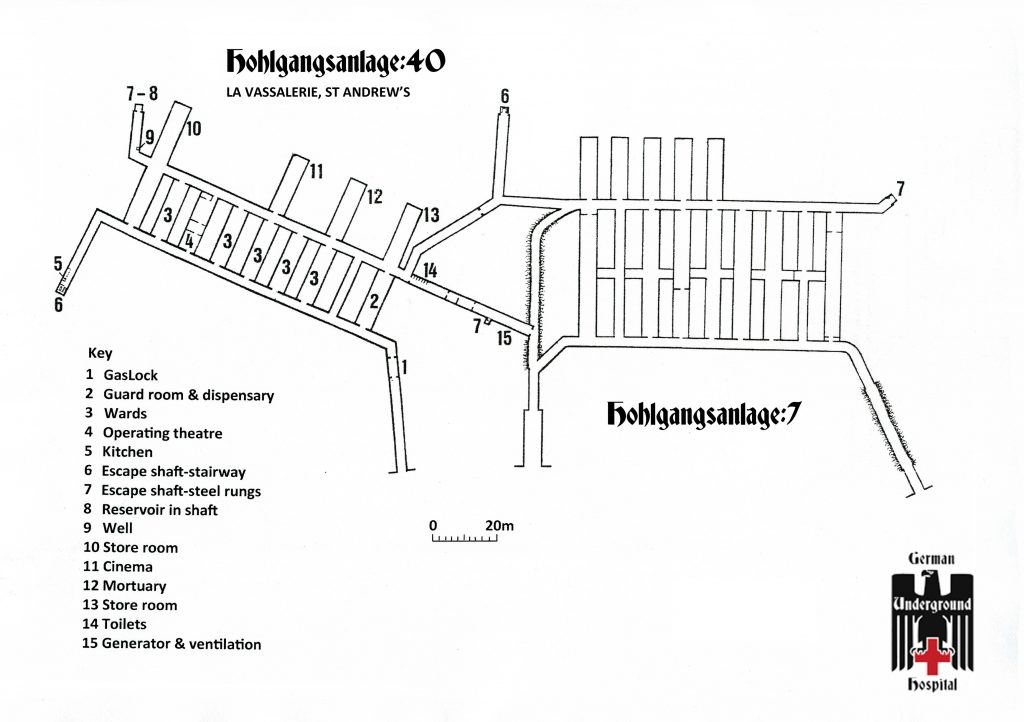History
The German Underground Hospital (Ho.40) and Ammunition Store (Ho.7) is the largest structural reminder of the German Occupation existing in the Channel Islands. This maze of tunnels covers an area of about 6,950 square metres (75,000 square feet). Almost invisible from the surface, except for the entrances, this vast concrete maze is built under a low hill in the heart of the Guernsey countryside.
The Underground Hospital tunnel complex now seen today did not appear on the 1942 German fortress construction maps and only appeared in early 1943, then designated for use as a shelter for a partly motorised machine-gun company. However the decision was made for it to be converted for use as a hospital, and identified from an entry in the local German forces paper the Deutsche Guernsey Zeitung in March 1944 work was just being completed on the transformation.
Likewise in 1942 what is now known as the Ammunition Store, was originally marked for use as Regimental reserve, in 1943, as a shelter for an infantry battalion staff and a machine-gun company both being partially motorised. As for the Underground Hospital, again in 1944 though some local residents indicate this might have been in early 1943, it was directed the site be converted into an ammunition store.

Image: Royal Court

Image: Royal Court
Construction
Work at the site was in parallel with many other fortification projects that were instigated as a result of Hitler’s fortification order in late 1941. This encompassed artillery batteries, anti-aircraft batteries, coastal defences, communication networks and many other tunnel projects. In this instance from aerial reconnaissance we know site work became apparent in January/February 1942, although planning would have commenced much earlier.
Much of this building work had finished in early 1944 as greater priorities meant the work force was directed elsewhere, meaning that in two and a half years the complex was built. Work on both tunnels was almost complete, apart from one link gallery just inside the joint main entrance, and part of the northern entrance tunnel of Ho.7, which was never concrete lined. By September 1944, German records show that 29,823m3 of rock had been excavated and 9,053m3 of concrete had been poured. Five escape shafts were constructed, two with concrete stairways, three with steel rung ladders.
Construction of such a huge complex came at a price. There were several accidents, the guide book stating that one rockfall killed six Frenchmen, while an accidental explosion killed a further seventeen workers, with many being interred at a workers cemetery near La Vassalerie.
Plan of the Underground Hospital

Plan: Festung Guernsey